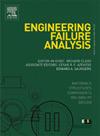Understanding surface morphology changes in stainless steel through stepwise cavitation erosion: A comprehensive study
IF 4.4
2区 工程技术
Q1 ENGINEERING, MECHANICAL
引用次数: 0
Abstract
Cavitation damage, evolution, and features with time are serious problems confronting designers and users of high-speed hydraulic machines. The stepwise erosion technique clarifies the evolution of cavitation damage and its features over time. The technique involves exposing a test sample to repeated very low durations of erosion, followed by accurate relocation in the SEM. This allows fora detailed study of the actual wear processes within a material, providing a solid foundation for understanding material failure. The experiments were conducted using an ultrasonic vibratory horn functioning at 19.5 kHz frequency and 50 µm ± 0.2 um peak-to-peak amplitude. The tested material was cold-rolled austenitic stainless steel SUS 304 (18 Cr-8 Ni). The results show that the slip bands formed due to shock waves’ impact are the preferential sites for early material removals. Material removal starts gradually along the slip bands that form at the grain boundary and then progresses into the grain. The results also showed that the microjets formed pits that were a few micrometers in size and separated from one another. These pits have remained the same shape and size over time, confirming their limited role in the evolution of cavitation damage. The initiation and progression of inherent cracks resulting from plastic deformation, as well as the characteristics of dislodged particles, strongly support the conclusion that shockwave impacts cause fatigue failure as the mechanism of cavitation erosion.
通过逐步空化侵蚀了解不锈钢表面形貌的变化:综合研究
气蚀破坏、演变和随时间变化的特征是高速液压机设计者和使用者面临的严重问题。分步侵蚀技术可明确气蚀损伤随时间的演变及其特征。该技术包括将测试样品反复暴露于持续时间极短的侵蚀中,然后在扫描电子显微镜中进行精确定位。这样就可以详细研究材料内部的实际磨损过程,为了解材料失效提供坚实的基础。实验使用频率为 19.5 kHz、峰-峰振幅为 50 µm ± 0.2 um 的超声波振动喇叭进行。测试材料为冷轧奥氏体不锈钢 SUS 304(18 Cr-8 Ni)。结果表明,冲击波冲击形成的滑移带是早期材料去除的首选部位。材料去除是沿着晶界处形成的滑移带逐渐开始的,然后进入晶粒内部。结果还显示,微射流形成的凹坑只有几微米大小,而且彼此分离。随着时间的推移,这些凹坑的形状和大小保持不变,这证实了它们在空化损伤演变过程中的作用有限。塑性变形导致的固有裂纹的产生和发展,以及脱落颗粒的特征,都有力地证明了冲击波撞击导致疲劳破坏是空化侵蚀机制的结论。
本文章由计算机程序翻译,如有差异,请以英文原文为准。
求助全文
约1分钟内获得全文
求助全文
来源期刊

Engineering Failure Analysis
工程技术-材料科学:表征与测试
CiteScore
7.70
自引率
20.00%
发文量
956
审稿时长
47 days
期刊介绍:
Engineering Failure Analysis publishes research papers describing the analysis of engineering failures and related studies.
Papers relating to the structure, properties and behaviour of engineering materials are encouraged, particularly those which also involve the detailed application of materials parameters to problems in engineering structures, components and design. In addition to the area of materials engineering, the interacting fields of mechanical, manufacturing, aeronautical, civil, chemical, corrosion and design engineering are considered relevant. Activity should be directed at analysing engineering failures and carrying out research to help reduce the incidences of failures and to extend the operating horizons of engineering materials.
Emphasis is placed on the mechanical properties of materials and their behaviour when influenced by structure, process and environment. Metallic, polymeric, ceramic and natural materials are all included and the application of these materials to real engineering situations should be emphasised. The use of a case-study based approach is also encouraged.
Engineering Failure Analysis provides essential reference material and critical feedback into the design process thereby contributing to the prevention of engineering failures in the future. All submissions will be subject to peer review from leading experts in the field.
 求助内容:
求助内容: 应助结果提醒方式:
应助结果提醒方式:


